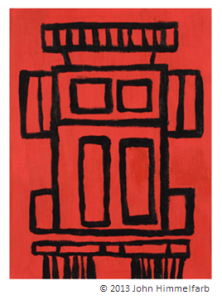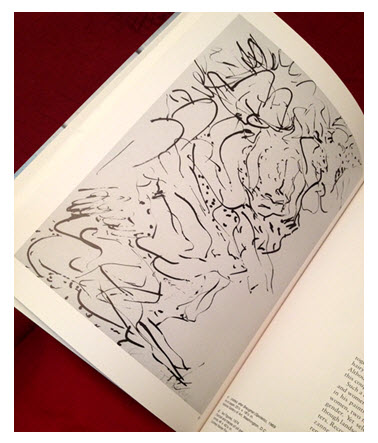When I’m tired or down or simply in need of a mental vacation, I seek out sources of beauty. For me, this means turning to works of art.
 For some, nature fills this critical role, as brilliantly painted skies or magnificent mountain vistas work their magic. For others, music, whatever their taste, evokes the splendor (or solace) they require.
For some, nature fills this critical role, as brilliantly painted skies or magnificent mountain vistas work their magic. For others, music, whatever their taste, evokes the splendor (or solace) they require.
For me, charcoal and oil and acrylic will do the trick, and of course, I have my favorite artists whose images always achieve the desired (positive) effect.
Now, we may not have the time for an afternoon at our favorite museum. We may not have the money for paintings on our walls. Still, great pleasure can be had by viewing masterworks on the web, and more satisfying for some of us, in much loved books.
And if you’re convinced you must drop a bundle to purchase art books, that isn’t necessarily the case. Some of my favorite texts with beautiful illustrations have come from the half-off or sale bin of various bookstores. You’d be surprised what treasures can be found for seven or eight bucks!
This weekend I took a little time and paged through some of my richly illustrated books. My taste in art runs the gamut from line drawings to vividly colored abstractions, and everything in between. I dusted off one book I had picked up for six dollars on Willem de Kooning, pouring through the plates and delighting in getting reacquainted with his work.
Then I settled in with another old friend called “At Home With Art,” impeccably demonstrating the unique and personal ways collectors integrate cherished objects into their everyday lives.
Why are some of us so ‘drawn’ to art?
 This article on the connection between art, healing and public health is on the scholarly side, but nonetheless confirms what some of us know from experience.
This article on the connection between art, healing and public health is on the scholarly side, but nonetheless confirms what some of us know from experience.
As we engage our most natural, intuitive and visceral senses, as we engage with what we feel and process as beauty, the results are physically and emotionally positive.
The article explains:
… Over the past decade, health psychologists have cautiously begun looking at how the arts might be used in a variety of ways to heal emotional injuries, increase understanding of oneself and others, develop a capacity for self-reflection, reduce symptoms, and alter behaviors and thinking patterns.
While I may wish to take up a sketchbook and pencil, it isn’t necessary. In fact, when I’m standing in front of a gorgeous work of art, I find myself transported.
If I ache, I’m consoled. If I’m fatigued, the colors and surfaces energize me.
I recall reading an article a few years ago on the power of art to heal and inspire. It was a column on Huffington Post by Michael B. Friedman, LMSW, addressing art and mental health. Mr. Friedman speaks to our search for meaning, enjoyment, and connection. The arts are one way to find that connection, whether through participation or observation.
Explaining how visual art may serve those who are “healthy” as well as those who suffer mental disorders, he points out:
… everyone who appreciates some sort of art experiences through it something powerful, significant, and elevating.
I couldn’t agree more. I also realize that as I grow older, it’s far simpler to clear away the noise, zero in on priorities, and understand that meaning, however we define it, is always ours to create in the ways we interact with each other and the values we choose to personify.
So here’s to finding beauty where we can, beauty that soothes as well as elevates, and knowing that it is more easily accessible than we might imagine. And as we look to “gift” this time of year, let’s not forget the significant joys to be found over and over again in the tactile pleasures of a beautiful book.
Image top right, John Himmelfarb, reproduced with permission of the artist. Image just above, Steve Seinberg, reproduced with permission of the artist.
You May Also Enjoy


Leave a Reply